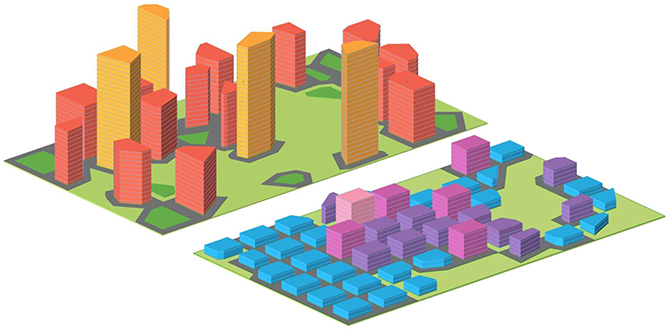To house our varying communities we need a housing diversity and this will lead to a range of densities and of heights. Most of Sydney will remain as low-density suburban housing but, around transport nodes and railway stations, greater height can provide apartment living for those that prefer to live this way. The Urban Taskforce, of which I am the Chief Executive, has developed models for seven different densities based on building heights. We believe that each of these seven is appropriate in certain locations and suits different demographics. Our research shows that, as densities increase, so do the amenities.
Discovery Point, for instance, at Wolli Creek, has 12-storey buildings and some as high as 24 storeys. The residents have a big waterfront park and under one of their buildings is a railway station that can take them to jobs in the city. An even denser precinct is the Central Park project on Broadway but it is minutes from Central Station and many buses. Central Park also has its own park, child care, shopping centre, swimming pool, gymnasium and a car pool. Not everyone wants to live at these developments but many people do, as evidenced by the robust sales of apartments.
We are finding that Gen X and Gen Y younger people often want to live in apartments in more urban locations with shops and amenities nearby. Retiring Baby Boomers are also moving to more urban apartment living, closer to coffee shops and cultural facilities. Many families are now residing in mid-rise apartments up to eight storeys with their own central courtyard with its playground.
Sydney will need around 600,000 new homes over the next 20 years and well over half of these are likely to be apartments. I see this as a reflection of the changing nature of our community, particularly related to those born overseas who are more used to apartment living. So we support a range of densities and heights across Sydney.
The other issue to consider is the amount of land different developments need. Low-rise, two-storey developments require 15 times more area than the same number of housing units in six-storey apartments. Sydney already has major transport problems, as people drive from the edge to their jobs in the centre. We can’t keep spreading, and many people don’t want to live on the edge, so sensible well-placed apartments help with our ecological footprint. Like the diversity of restaurants in King Street, Newtown, we need a diversity of housing types and this will range from two-storey terraces to six-storey apartments and to 24-storey residential towers – each carefully located within the city fabric.





